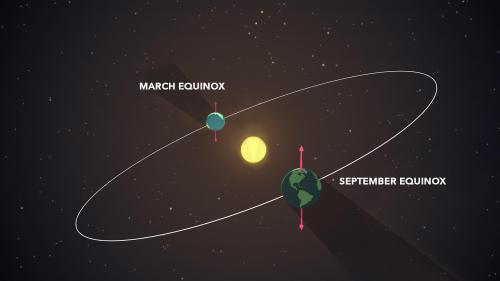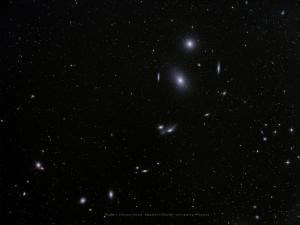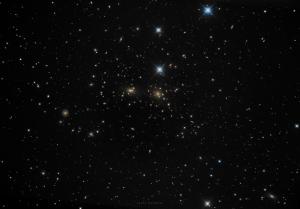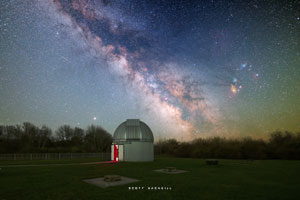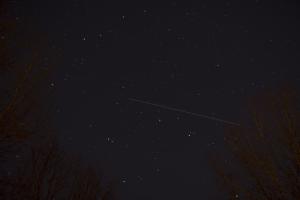Celebration of Space - March 17, 2023
On Monday, March 20, 2023, at 5:25 pm ET, Earth will arrive at the point in our orbit where we are neither tilted towards or away from the Sun. This is the Vernal Equinox, and marks the first day of spring in the Northern Hemisphere. Equinox is Latin for “Equal-night”, and on the Equinox, all locations on Earth will experience an equal amount of daytime and nighttime periods. Sky watchers that reside along the Equator will experience the Sun rising due east, cross the zenith at noon (pass directly overhead), and set due west. The Vernal Equinox also signals a shift in daytime length to a period where the daytime is longer than the nighttime in the Northern Hemisphere, as we commence our push towards the summer season. So take a moment on Monday to step outside and welcome spring, and all the mud, mosquitoes, and pollen everywhere that comes with it.
Among astronomy circles, springtime is also known as galaxy season. This is because the Virgo Galaxy Cluster, which the Local Group and Milky Way Galaxy are part of, becomes very visible in the overnight sky. The average sky watcher will not notice this just by looking up, because these galaxies are way too faint to be seen with the naked eye. Many of these galaxies are bright enough to be seen with a quality backyard telescope, but the bigger the telescope – the better the view. The Virgo Galaxy Cluster, which is part of the larger Virgo Supercluster, which resides in several constellations, but is centered on the constellation Virgo, with most galaxies residing between the constellations Coma Berenices, Leo, and Virgo. The Virgo Supercluster is comprised of over 100 galaxy groups, with the Virgo Galaxy Cluster containing upwards of 2,000 galactic components. The cluster is so dense from our point of view that you can point a telescope towards this region and just pan around to locate dozens of galaxies. It is not uncommon to find a view with more than one galaxy in the field. Over the course of spring, we will be viewing several notable galaxies in this region during our Friday night events at Frosty Drew Observatory that come without the Moon. If you haven’t experienced a view of these galaxies, now is the time to plan a visit.
Another aspect of springtime that the regular sky watcher will notice is that the sky appears to advance rather quickly in the spring. What we mean by “advance”, is the apparent movement of the constellations and stars across the sky and how that appears to increment a little westward each night. This movement is a product of Earth orbiting the Sun, and the rate is relatively static aside from approach and departure of perihelion (thanks Kepler). But during the springtime this advancement seems to really pick up in speed. What we are witnessing is a phenomenon that applies only to views from Earth. It is related to our 23.4° axial tilt, which is what gives us our seasons. During springtime, sunset times become later and later until we reach the Summer Solstice in June. The daily change in sunset time becomes more dramatic as we close in on the Solstice. Because the Sun is setting later each night, the night sky becomes visible later in the night, though the movement of the sky each night isn’t changing. Stars that we were able to see earlier in the season low in the eastern sky, will not be visible later in the season, until they are much further west. This gives us the illusion of an exaggerated advancement of the sky. Even though the sky advances at the same rate, viewing times of the springtime constellations are decreased as we move towards summer due to the increasingly shorter nighttime periods each day. Add in the increase in cloudy nights for New England during this season, and springtime becomes a tough sell for the astro geeks in the region. Regardless, make those clear, moonless nights count, and get out there for a view!
On Tuesday, March 21, 2023 at 1.27pm ET, the March New Moon will occur. The new Moon happens when the Moon orbits into alignment with the Earth and Sun, positioned in between the Earth and the Sun. We call this conjunction, and places the other side of the Moon in direct sunlight, with the side that we see being in full shadow. Additionally, on the day of the new Moon, the Moon will rise and set with the Sun, making it the best night of the month to be out under super dark sky conditions. After the new Moon passes, we will start to see that fantastic, super thin crescent Moon just after sunset. Early spring will set us up for excellent views of the thin waxing crescent phases of the Moon, due to the angle of the ecliptic (the path the Sun takes across the sky). Set a reminder on your calendar app to step outside each night starting Wednesday, March 22nd, just after sunset, to catch a view of the slender crescent Moon.
This past week, the International Space Station (ISS) returned to the evening sky over the US, offering stunning evening passes over our region. Now we have both stations in the evening sky, Tiangong – China’s space station, and the ISS. Though Tiangong will only stick around until Tuesday, March 21st before departing the evening sky. Catching sight of these stations passing over is a fantastically inspiring experience. It is a prime example of what we are capable of when we put our best efforts forward. Evening passes are also much easier to see than early morning passes, and will give you a chance to get out with the whole family to sneak a peek. Here are a few notable pass times of the ISS and Tiangong over the next few days:
ISS:
Fri, Mar 17 at 8:38 pm, starting in the WSW, rising to 41°, heading towards the N, and into orbital sunset
Sat, Mar 18 at 7:50 pm, starting in the WSW, rising to 66°, heading towards the NE ← Awesome pass!
Sun, Mar 19 at 8:40 pm, starting in the WNW, rising to 22°, heading towards the NNE, and into orbital sunset
Mon, Mar 20 at 7:52 pm, starting in the W, rising to 29°, heading towards the NE.
Tue, Mar 21 at 8:43 pm, starting in the NW, rising to 16°, heading towards the NNE, and into orbital sunset
Wed, Mar 22 at 7:54 pm, starting in the WNW, rising to 18°, heading towards the NNE
Tiangong:
Fri, Mar 17 at 8:48 pm, starting in the W, rising to 29°, and into orbital sunset.
Sat, Mar 18 at 7:47 pm, starting in the W, rising to 50°, heading towards the SE, and into orbital sunset
Sun, Mar 19 at 8:23 pm, starting in the W, rising to 21°, heading towards the S, and into orbital sunset
For daily pass times of the stations and other bright satellites, be sure to check in regularly with the Frosty Drew Daily Satellite Pass Prediction Utility.
Have a fantastic Vernal Equinox from all the astro geeks at Frosty Drew Observatory and Science Center!
- Author:
- Scott MacNeill
- Entry Date:
- Mar 17, 2023
- Published Under:
- Scott MacNeill's Columns

